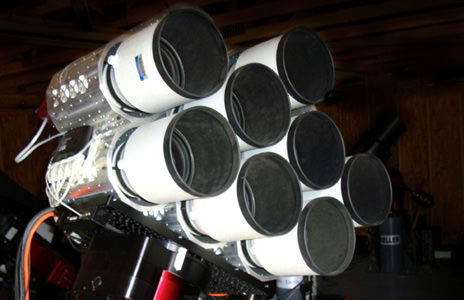Using a unique type of telescope that includes long-range lenses, astronomers at Yale University have found seven dwarf galaxies surrounding the well-known Pinwheel Galaxy, M101.
It’s unclear if the septuplets are actually orbiting the pinwheel, or just happen to be in the same field of view. But astronomers at Yale say that this shows the so-called Dragonfly Telephoto Array is working well, and they are planning follow-up observations to see what else they can find.
“The previously unseen galaxies may yield important insights into dark matter and galaxy evolution, while possibly signaling the discovery of a new class of objects in space,” Yale University stated in a release.
The galaxies escaped detection before because their light is so diffuse, but this is what the telescope is designed to pick up. The telescope is constructed of eight telephoto lenses (similar to what you would use to photograph a sporting event) that include “special coating” to stop any light from scattering inside. The telescope is called “Dragonfly” because like an insect, it has multiple eyes for looking at things.

Follow-up observations will come with the Hubble Space Telescope. If it turns out that these galaxies are not bound to M101, the results will be equally interesting to astronomers.
“There are predictions from galaxy formation theory about the need for a population of very diffuse, isolated galaxies in the universe,” stated Allison Merritt, a Yale graduate student who led the research.
“It may be that these seven galaxies are the tip of the iceberg, and there are thousands of them in the sky that we haven’t detected yet.”
The research was published in Astrophysical Journal Letters and is also available in preprint version on Arxiv.
Source: Yale University


It’s very cool to see the dwarfs getting this attention. I was just lamenting last night that the bigger galaxies tend to steal the show.